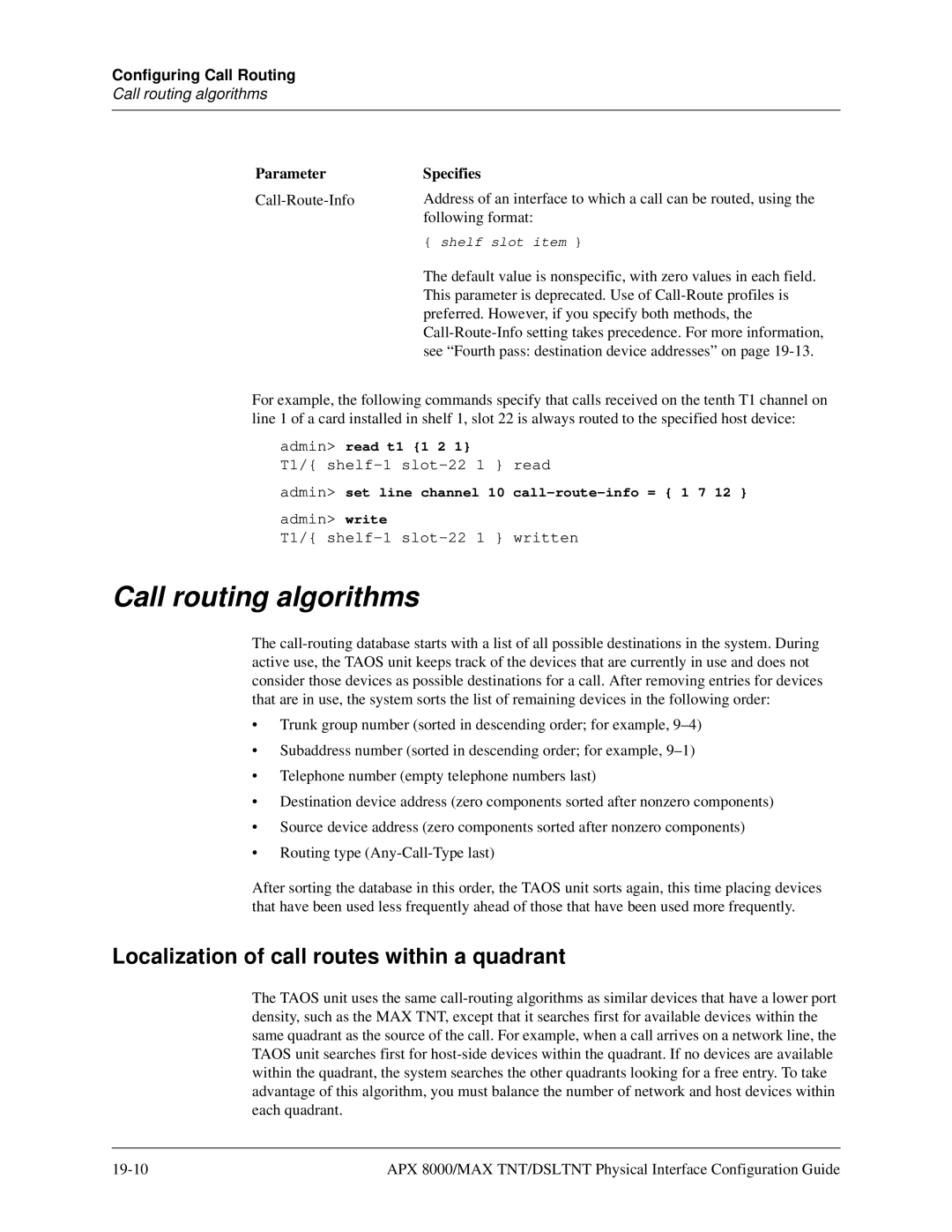
Configuring Call Routing
Call routing algorithms
Parameter
Specifies
Address of an interface to which a call can be routed, using the following format:
{shelf slot item }
The default value is nonspecific, with zero values in each field. This parameter is deprecated. Use of
For example, the following commands specify that calls received on the tenth T1 channel on line 1 of a card installed in shelf 1, slot 22 is always routed to the specified host device:
admin> read t1 {1 2 1}
T1/{
admin> set line channel 10
admin> write
T1/{
Call routing algorithms
The
•Trunk group number (sorted in descending order; for example,
•Subaddress number (sorted in descending order; for example,
•Telephone number (empty telephone numbers last)
•Destination device address (zero components sorted after nonzero components)
•Source device address (zero components sorted after nonzero components)
•Routing type
After sorting the database in this order, the TAOS unit sorts again, this time placing devices that have been used less frequently ahead of those that have been used more frequently.
Localization of call routes within a quadrant
The TAOS unit uses the same
APX 8000/MAX TNT/DSLTNT Physical Interface Configuration Guide |
